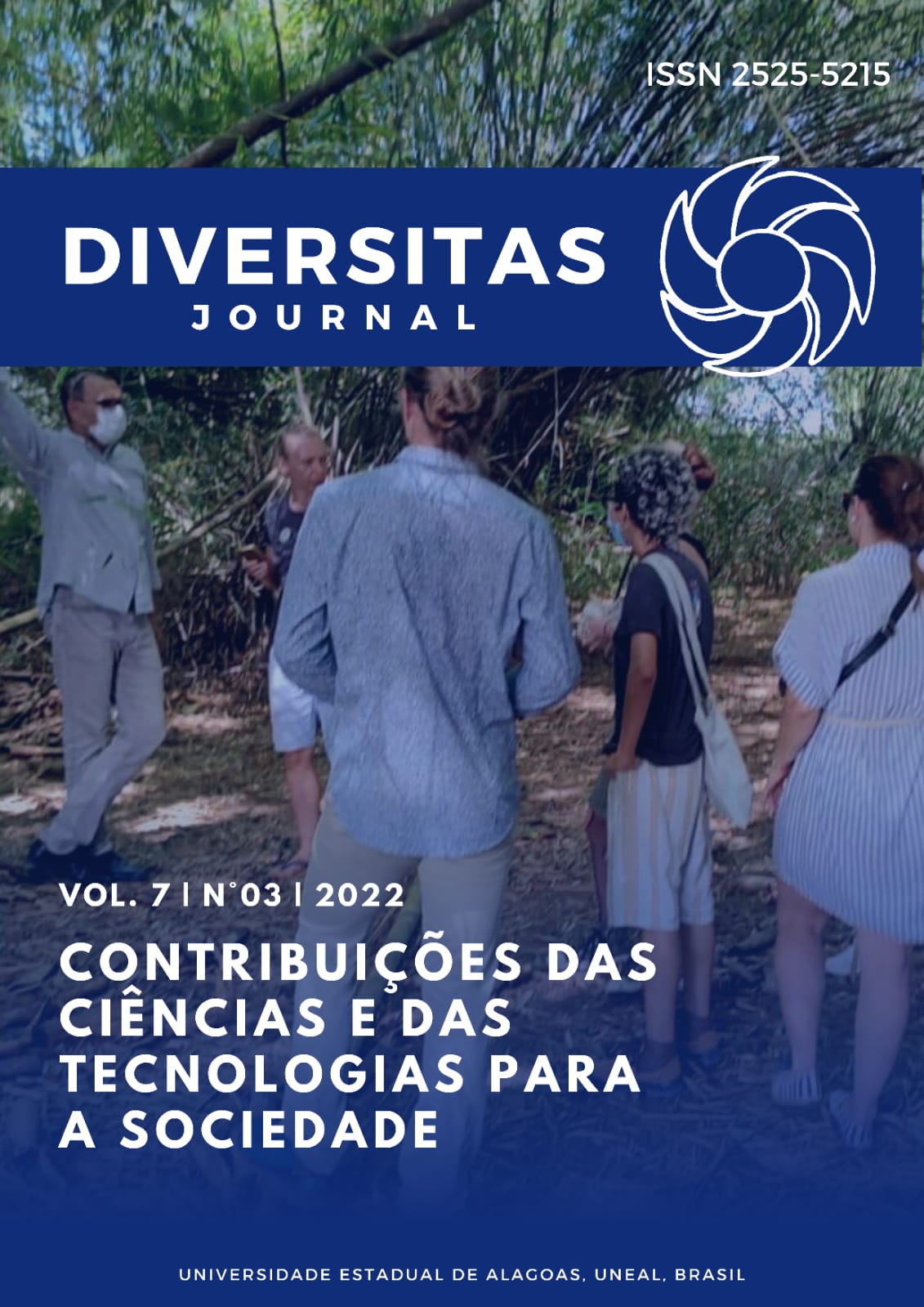Plant pigments: a teaching alternative in plant physiology classes using the paper chromatography technique
DOI:
https://doi.org/10.48017/dj.v7i3.2043Keywords:
Botany, Asynchronous Classes, Teaching-learningAbstract
Plant Physiology is the branch of botany that explores and studies the vital phenomena for the permanence of plants in different environments, addressing different interdisciplinary contents. One of the fundamental contents discussed is photosynthesis, a process by which plants and some other organisms transform light energy into chemical energy. This process occurs in photosystems, which are made up of accessory proteins and pigments (chlorophyll a, chlorophyll b, β-carotenes and xanthophylls). These pigments, when they receive sunlight, reflect different colors and may have specific functions, with the paper chromatography technique being a method of extracting them. Knowing that practical classes are fundamental for the teaching and learning process, this work aimed to use the paper chromatography technique, a widely used method to separate plant pigments, as an alternative teaching in photosynthesis classes during the monitoring period at discipline of Plant Physiology in a higher education class, remotely. Green leaves of a plant were used (student's choice); reddish/purple leaves of a plant (student's choice) or half of a beet; half a carrot, to extract plant pigments in different species. At the end of the experiment, a questionnaire was carried out where a positive result was obtained, according to the evaluation criteria established by the monitors, which it is possible to obtain during remote classes for practical activities in the teaching process. Through online classes, practical activities in Vegetal Physiology capable of contributing to student education can be carried out.
References
Cavalcante, A. C. P., Azeredo, G. A., & Diniz, B. L. M. T. (2012). Contribuições da monitoria na disciplina de Anatomia e Ecofisiologia Vegetal. Anais do Encontro Unificado da Universidade Federal da Paraíba, UFPB.
Elbe, J. H. (2000). Von. Colorantes. In FENNEMA, O. W. (Ed). Quimica de los alimentos. 2 ed. Zaragoza: Wisconsin, p. 782-799.
Farias, D. P.; Costa, N. P. da. (2012). A monitoria como ferramenta auxiliar no processo ensino/ aprendizagem na disciplina de biologia celular. Areia: UFPB/CCHSA.
Felix, A. A. F. (2010) Extração e separação de pigmentos fotossintéticos - Protocolo experimental. Biologia e Geologia (ano 1).
Gomes, F. S. (2007). Carotenoides: uma possível proteção contra o desenvolvimento de câncer. Rev. Nutr. [online], vol.20, n.5. https://doi.org/10.1590/S1415-52732007000500009.
Landi, M.; Tattini, M.; Gould, K. S. (2015). Multiple functional roles of anthocyanins in plant-environment interactions. Environmental and Experimental Botany, v. 119, p. 4-17. https://doi.org/10.1016/j.envexpbot.2015.05.012.
Lins, L. F.; Ferreira, L. M. C.; Ferraz, L. V.; Carvalho, S. S. G. de. (2009). A importância da monitoria na formação acadêmica do monitor. In: JEPEX 2009 - IX Jornada de ensino, pesquisa e extensão da UFRPE, Recife. http://www.eventosufrpe.com.br/jepeX2009/cd/resumos/R0147-1.pdf
Lunetta, V. N. (1991). Atividades práticas no ensino da Ciência. Revista Portuguesa de Educação, v.2, n.1, p.81-90.
Peres, T. B. (2002). Noções básicas de cromatografia. Biológico, São Paulo, v. 64, n. 2, p. 227-229. http://www.biologico.agricultura.sp.gov.br/uploads/docs/bio/v64_2/peres.pdf
Prisco, J. T. (2007). Introdução à fisiologia vegetal: conceito e aplicações. In: LACERDA, C. F.; FILHO, J. E.; PINHEIRO, C. B. Fisiologia vegetal. Fortaleza: UFC, 2007, p. 1- 7.
Schalch, C. S. (2011). A biologia e a fonte de energia dos combustíveis fósseis: Análise das concepções de alunos do ensino médio sobre a origem da energia presente nos combustíveis fósseis. (Monografia para título de Especialista). Universidade de São Paulo.
Torres, S. J. (1998). Globalização e interdisciplinaridade: o currículo integrado. Porto Alegre: Artmed.
Travessas, A. O.; Pedroso, L. D.; Aguiar, A. V.; Vestena, S. (2018). Monitoria Em Fisiologia Vegetal Na Universidade Federal Do Pampa - Campus São Gabriel. In: Anais do 10º Salão Internacional De Ensino, Pesquisa E Extensão – SIEPE. Santana do Livramento, Universidade https://periodicos.unipampa.edu.br/index.php/SIEPE/article/view/86357.
Peixoto, P. H. P.; Pimenta, M. R.; Dos Reis, L. B. (2020). Fisiologia Vegetal. https://www.ufjf.br/fisiologiavegetal/files/2018/07/Referencial-Te%c3%b3rico-dos-Subt%c3%b3picos.pdf.
Additional Files
Published
How to Cite
Issue
Section
License
Copyright (c) 2022 Leonardo Santos, Giselle Souza, Dacio Brito

This work is licensed under a Creative Commons Attribution 4.0 International License.
The Diversitas Journal expresses that the articles are the sole responsibility of the Authors, who are familiar with Brazilian and international legislation.
Articles are peer-reviewed and care should be taken to warn of the possible incidence of plagiarism. However, plagiarism is an indisputable action by the authors.
The violation of copyright is a crime, provided for in article 184 of the Brazilian Penal Code: “Art. 184 Violating copyright and related rights: Penalty - detention, from 3 (three) months to 1 (one) year, or fine. § 1 If the violation consists of total or partial reproduction, for the purpose of direct or indirect profit, by any means or process, of intellectual work, interpretation, performance or phonogram, without the express authorization of the author, the performer, the producer , as the case may be, or whoever represents them: Penalty - imprisonment, from 2 (two) to 4 (four) years, and a fine. ”


















